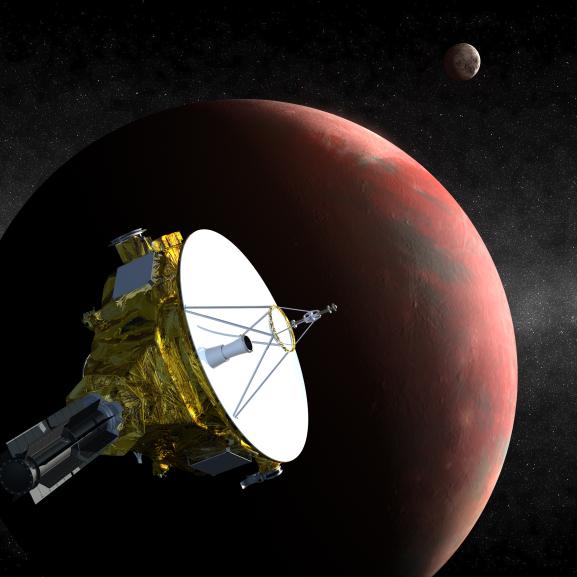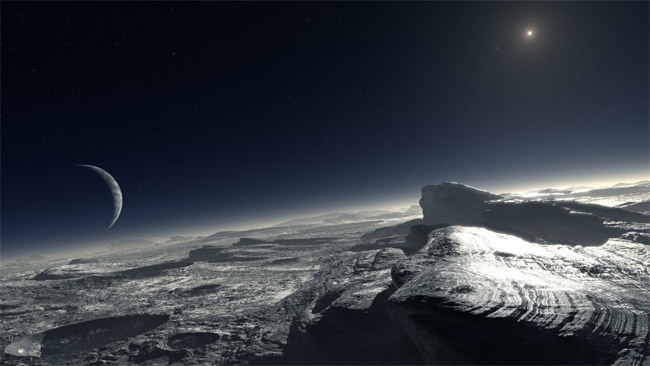NASA Spacecraft in Home Stretch of Journey to Pluto

A super-speedy NASA probe marks six years of spaceflight today (Jan. 19), beginning the last leg of its journey to the small, faraway world of Pluto.
The New Horizons spacecraft launched Jan. 19, 2006, on a mission to become the first probe to visit the dwarf planet Pluto and its moons. That unprecedented encounter is slated to begin in January 2015, so New Horizons has now entered the home stretch of its nine-year trip, researchers said.
"It's really around the corner," said New Horizons principal investigator Alan Stern, of the Southwest Research Institute in Boulder, Colo. "We're just more and more excited."
Entering 'late cruise' phase
The New Horizons team breaks the spacecraft's flight to Pluto into three three-year segments, Stern said — early cruise, mid cruise and late cruise.
"We are now turning the corner from mid cruise to late cruise," Stern told SPACE.com. "We're really in the final stages." [Photos of Pluto and Its Moons]
Late cruise should be a busy time for mission scientists and engineers, as they check out the spacecraft's systems and prepare for the flyby of Pluto and its four known moons. That encounter technically begins in January 2015, Stern said, though closest approach will occur that July, when New Horizons comes within about 6,000 miles (9,600 kilometers) of Pluto.
Breaking space news, the latest updates on rocket launches, skywatching events and more!
During the flyby, New Horizons will study Pluto and its moons with seven different instruments, performing the first in-depth reconnaissance of these frigid, far-flung objects.
In fact, researchers have said, the mission will give scientists their first good look at any dwarf planet — a class of bodies suspected to be far more numerous in our solar system than terrestrial and giant planets combined.
1 billion miles to go
Pluto is found in the Kuiper Belt, the ring of icy objects beyond Neptune's orbit. As of today, New Horizons has put about 2.14 billion miles (3.45 billion km) on its odometer, with roughly another 1 billion miles (1.6 billion km) left to go before the close encounter.
The probe's work won't be done after it flies by the Pluto system in 2015. The mission team wants New Horizons to study one or two other Kuiper Belt objects as well.
NASA has billed New Horizons as the fastest spacecraft ever launched from Earth. According to the mission team, the probe is now speeding through space at 34,426 mph (55,404 kph) relative to the sun.
While New Horizons spends most of its cruise time hibernating, it's awake for now. Scientists and engineers are performing various tests on the spacecraft throughout January, Stern said, adding that the spacecraft is in good health.
'An American story'
The excitement of the New Horizons team has been tempered with some sadness this month, as the scientists mourn the death of Patsy Tombaugh, the widow of Pluto's discoverer.
Pluto was discovered in 1930 by American astronomer Clyde Tombaugh, who died in 1997. Patsy passed away on Jan. 12 at the age of 99.
Patsy Tombaugh was very enthusiastic about the New Horizons mission, and the team will miss her a great deal, Stern said.
"She was such a wonderful woman," Stern said. "It was sad to see her pass without getting to see what her husband's planet really looked like."
But the Tombaughs' two children, Annette and Alden, should get to see what New Horizons discovers. They'll be the mission team's guests of honor when the probe makes its closest approach to Pluto in July 2015, Stern said.
On top of its technical and scientific ambitions, New Horizons is also part of "a very personal story, an American story," Stern said. "I think that just makes it nice."
You can follow SPACE.com senior writer Mike Wall on Twitter: @michaeldwall. Follow SPACE.com for the latest in space science and exploration news on Twitter @Spacedotcom and on Facebook.
Join our Space Forums to keep talking space on the latest missions, night sky and more! And if you have a news tip, correction or comment, let us know at: community@space.com.

Michael Wall is a Senior Space Writer with Space.com and joined the team in 2010. He primarily covers exoplanets, spaceflight and military space, but has been known to dabble in the space art beat. His book about the search for alien life, "Out There," was published on Nov. 13, 2018. Before becoming a science writer, Michael worked as a herpetologist and wildlife biologist. He has a Ph.D. in evolutionary biology from the University of Sydney, Australia, a bachelor's degree from the University of Arizona, and a graduate certificate in science writing from the University of California, Santa Cruz. To find out what his latest project is, you can follow Michael on Twitter.

